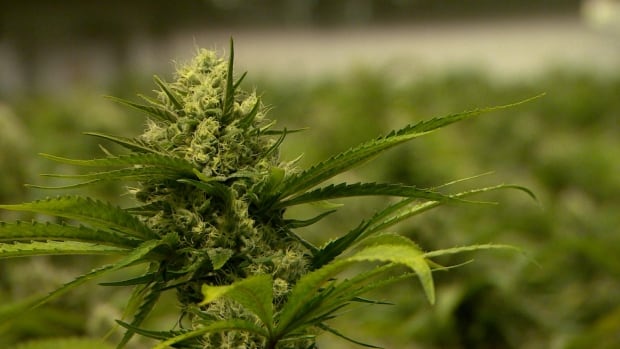News
Canada’s Cannabis Regulatory Revolution: Navigating the Complex Framework
Canada’s journey from cannabis prohibition to legalization has been a remarkable transformation that has captured global attention. However, behind this groundbreaking shift lies a complex web of Cannabis Regulatory regulations that govern every aspect of the cannabis industry. This magazine-style blog embarks on a comprehensive exploration of Canada’s intricate Cannabis Regulatory framework, shedding light on its evolution, key components, challenges, and its impact on various sectors of society.
A New Era Dawns: The Road to Cannabis Legalization in Canada

Canada’s journey towards cannabis legalization represents a historic shift that has captured global attention. After decades of cannabis prohibition, the nation embarked on a transformative path, becoming one of the first G7 countries to fully legalize recreational cannabis. This monumental decision was driven by a combination of motivations and aspirations. The desire to regulate cannabis stemmed from recognizing its potential benefits for both medical and adult-use purposes. On the medical front, growing evidence highlighted cannabis’s therapeutic potential in alleviating a range of conditions, from chronic pain to epilepsy. The shift also aimed to address the societal costs of criminalization, redirecting law enforcement efforts toward more pressing matters. Additionally, embracing legalization provided an opportunity to regulate cannabis production, distribution, and consumption, ensuring product quality, safety, and consumer education. This shift marked not only a significant policy change but also a cultural evolution, as perceptions around cannabis evolved from stigma to acceptance, opening doors to new economic opportunities and paving the way for a more informed and progressive approach to cannabis regulation.
Navigating the Layers: Federal vs. Provincial Cannabis Regulatory Regulations
In Canada, the cannabis regulatory landscape is intricately layered, with a dual structure that incorporates both federal and provincial regulations. This structure was designed to strike a balance between maintaining overarching consistency across the country and allowing individual provinces and territories to tailor certain regulations according to their unique needs and preferences. At the federal level, laws such as the Cannabis Act provide the foundation for the legal framework surrounding cannabis production, distribution, and possession. These federal laws outline fundamental principles that apply uniformly throughout Canada, ensuring a cohesive and standardized approach to issues like legal age limits, possession limits, and licensing requirements for cannabis-related businesses.
Recognizing the diverse cultural, social, and economic landscapes of different provinces and territories, the Canadian government has granted them the authority to implement regulations that align more closely with their local values and priorities. This decentralized approach empowers provinces to adapt certain aspects of the cannabis regulatory framework to better suit their specific populations. For example, provinces can determine the rules governing retail distribution, including the number and location of retail stores, as well as marketing and advertising guidelines. This flexibility acknowledges that what may work for one province may not be the optimal approach for another.
The balance between federal consistency and provincial flexibility is a delicate one, and striking it requires open communication and collaboration between the federal government and the provinces. While uniformity ensures that core principles are upheld across the country, provincial autonomy allows for targeted responses to local needs. This nuanced regulatory structure demonstrates Canada’s commitment to providing a comprehensive yet adaptable framework that can address the varying perspectives and preferences of its diverse population. As the cannabis industry continues to evolve, finding the right equilibrium between federal and provincial regulations remains crucial to ensuring the effectiveness and integrity of the overall cannabis regulatory system in Canada.
From Seed to Sale: Understanding the Cannabis Regulatory Supply Chain

Uncover the intricacies of Canada’s cannabis supply chain. Discuss the licensing and oversight of cultivation, processing, distribution, and retail operations. Highlight how Health Canada oversees licensing while provinces manage distribution and retail frameworks.
High Standards: Health and Safety Regulations in Cannabis Regulatory Production
Examine the stringent health and safety standards imposed on cannabis producers. Explore measures such as quality control, testing, labeling, and packaging to ensure consumers receive safe and reliable products.
Balancing Act: Legalization vs. Youth Protection in Cannabis Regulatory

Discuss the challenges of maintaining a regulated cannabis market while safeguarding youth from exposure to cannabis products. Explore the measures in place to restrict advertising, packaging, and access to minors.
Challenges and Evolution: Lessons from the Early Years of Cannabis Regulatory
Reflect on the initial challenges faced during the early days of cannabis legalization in Canada. Explore the ongoing adjustments, policy adaptations, and lessons learned as the regulatory framework evolves.
Beyond Borders: Canada’s Global Impact on Cannabis Regulatory Regulation

Examine Canada’s influence on international cannabis regulations. Discuss its role in shaping the global perception of cannabis and its potential as a medical and economic asset, as well as its collaboration with other nations exploring similar paths.
Canada’s Inspiring Cannabis Regulatory Model: A Global Blueprint
Canada’s complex Cannabis Regulatory framework is a testament to the nation’s dedication to striking a delicate balance between public health, safety, and economic growth. As Canada continues to refine its approach based on experience and feedback, the world watches closely, drawing inspiration and lessons from its pioneering journey. While challenges persist, the ongoing commitment to responsible cannabis regulation serves as a blueprint for other countries embarking on their cannabis legalization endeavors.


